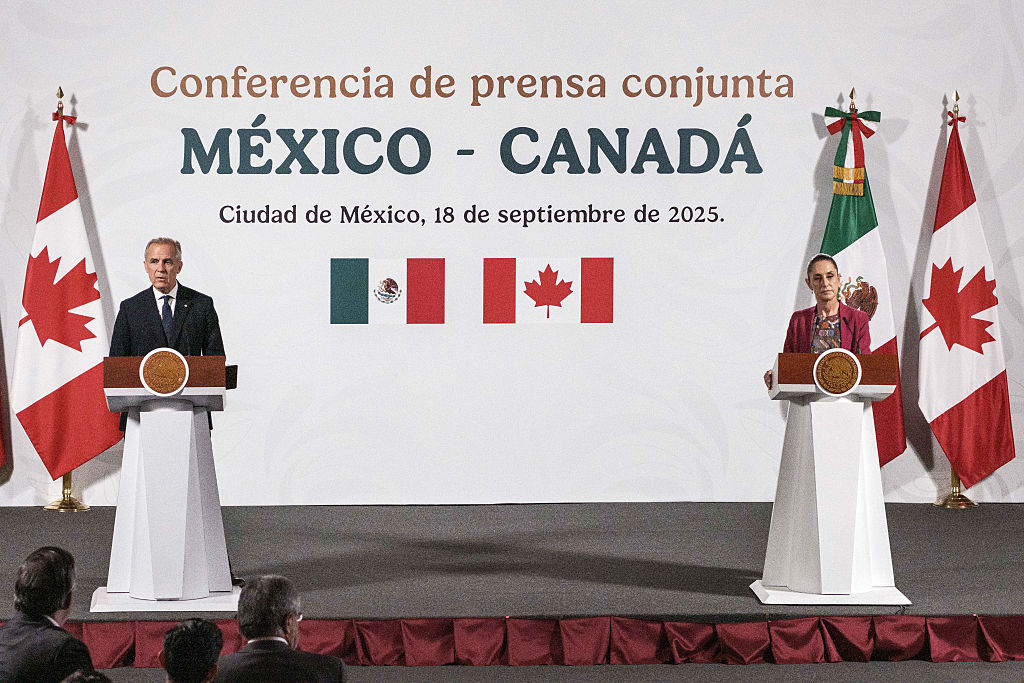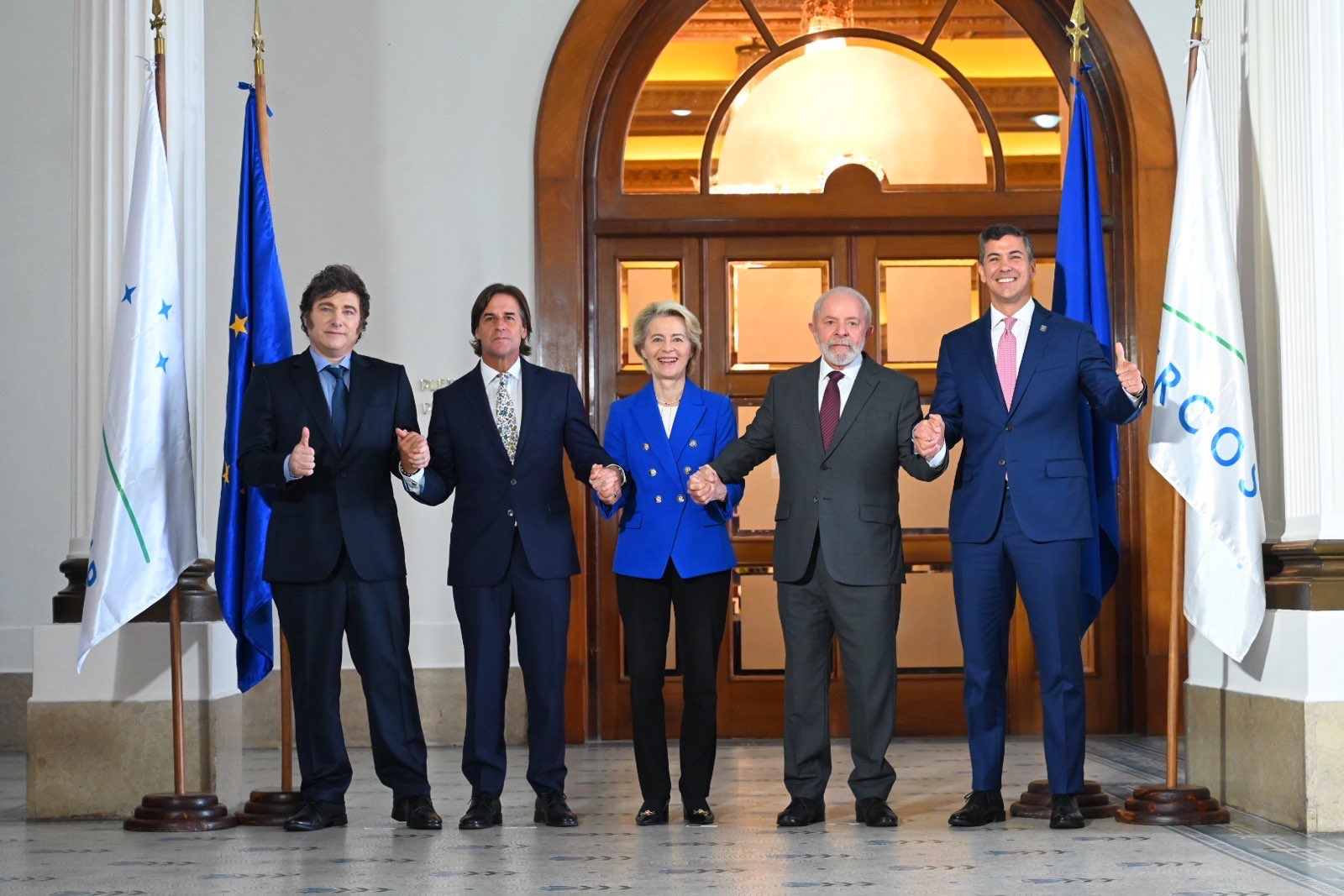Building the Hemispheric Growth Agenda
Building the Hemispheric Growth Agenda
“We’re all in this together, and if we act in a coordinated and thoughtful manner, we’ll be able to get out of it together” writes COA Vice President Eric Farnsworth for Poder magazine. At this time of financial crisis, he suggests revitalizing the trade agenda to boost economies across the Americas.
The reality of the economic crisis that began in the United States is now sinking in across the Americas. Repercussions will almost certainly be broader and deeper than originally anticipated, as commodities from agriculture to zinc take a beating in the global economic meltdown. Recent outperformer Brazil is slowing, and others will see their economies shrink. That will have profound implications, as populations become restless for improved economic conditions and a newly emerging middle class is squeezed even as national elections loom in several countries. At the same time, the oil largesse funding the Bolivarian revolution will shrink just at the time when countries such as Bolivia have done everything they could to isolate themselves from the global economy and now have limited options beyond continued reliance on international aid.
Fasten your seatbelts, folks, we’re in for a wild ride over the next few months in the Americas.
Even before the economic crisis hit, roughly 33 percent of the regional population lived in poverty. Some governments like those in Brazil, Chile, Colombia and Peru were making solid progress reducing poverty and building a stable middle class. Other countries, like Bolivia, Ecuador, Nicaragua and Venezuela, were stagnating as populist policies overwhelmed economic orthodoxy. Now, as the global crisis deepens, worrisome trends have emerged for a region that still, despite years of badgering by economic development specialists, continues to rely primarily on global commodities markets for its economic health. Now that global growth has deteriorated, particularly in the United States, Europe, and China, commodities prices have collapsed, and economies that relied on them are feeling the pinch.
The development of a new hemispheric growth agenda is critical, and the next Summit of the Americas, in Trinidad and Tobago in April, will be the right time to move ahead. Leaders at the Summit, no matter their ideological bent, must be prepared to state unequivocally that they will resist the temptation to raise barriers to trade and investment, whether “legal” under the WTO or not, or else they will lock in economic losses and harm, rather than improve, their chances of recovery. Coming on the heels of the next G20 meeting, the Summit of the Americas should work in the first instance to ratify the concept of open markets for the Americas as a means to economic recovery and longer term growth.
More broadly, a Summit agenda focused on financial well-being, energy security and climate change, microeconomic reforms, capacity building and workforce development is long overdue. Latin America’s stultifying labor codes, meant to protect workers, should also be liberalized, as they have been identified as contributing directly to Latin America’s undercreation of jobs in the formal economy. To be sure, these are longer term policies, but as the Spanish proverb says, the best time to plant a tree is either 20 years ago or today.
In the meantime, a focus on access to credit, trade finance (both imports and exports), and infrastructure development will help keep hemispheric economies from seizing up. Given Latin America’s history with hyper inflation, however, central banks will also need to be ever-vigilant about soft monetary policy as well as permissive fiscal stimulus and deficit spending programs. If job losses mount and the middle class begins to suffer, but once inflation gears up, there would be no way to turn back. We don’t need another “lost decade” in the Americas.
With this in mind, the trade agenda should also be revitalized as a means to create jobs and build competitiveness. In a compelling new report, the Americas Society/Council of the Americas has put forward a number of ways to kick-start the hemispheric trade expansion agenda, even during a period of economic uncertainty and political change. Among ideas are two that stand out. The first is linkage of existing trade agreements in the hemispheric through the harmonization of rules of origin, which would unlock immense gains from trade that are currently foregone through trade diversion and unnecessarily complicated trading arrangements. Second, given the continued long-run vibrancy of Asia and emerging patterns of pan-Pacific trade and investment, the Trans-Pacific Partnership with Chile, Singapore, New Zealand, and others is an exciting avenue for the United States to pursue as a means to promote hemispheric trade expansion. This high-standards trade platform, which by definition only includes willing partners and those who view trade as a constructive means to develop their own economies, will be the next chapter in building a broader relationship among Asia, North America, and Latin America. It should be actively promoted and pursued, because trade and investment remain among the very best tools that the United States has to promote a regional growth agenda.
On the flip side, if a growth agenda is not quickly pursued, one can easily predict a period of greater economic distress, particularly in the middle classes who have just recently begun to enjoy the prospect of a better life. As expectations increasingly go unmet, voters will begin to punish leaders at the polls, and this year five Latin American nations hold elections for president: Chile, El Salvador, Honduras, Panama, and Uruguay. Disaffected voters could very well begin to demand deeper change in some of these countries, further complicating the politics of the region.
The big question mark is Venezuela, which relies on petroleum exports for most of its economic well-being. When the price per barrel of crude was approaching $150/bbl, the Venezuelan economy was flush with cash which was liberally distributed throughout the economy and also given abroad in sweetheart deals for the purpose of building Bolivarian alliances. Now that crude has fallen below $40/bbl, these actions are unsustainable. As the Venezuelan regime increasingly uses its finances to shore up the President’s political fortunes domestically, support for other governments in the region such as Bolivia, Ecuador, and Nicaragua could well begin to dwindle. As a practical matter, this would saw off the economic limb that Venezuela has been busy provoking these erstwhile allies to go out as far on as possible. When this occurs, what options does Bolivia have, for example, now that La Paz has virtually destroyed its relationship with the United States and is busy complicating its relationship with Brazil and others in the region? The answer is there really aren’t that many other options, and it will be the long-suffering Bolivian people, not their leaders in La Paz or provocateurs in Caracas, who will suffer the most. With this in mind, we many even begin to see increasing political unrest and even volatility in some countries as people demand better economic conditions and governments take steps to maintain order and tighten their control.
These issues will face the new US Administration from the very beginning, and President Obama and his team will need to be sensitive to the economic strain facing the region as a first priority when he meets with leaders in Trinidad and Tobago. Leaders will be looking to the United States to find ways to work out of the financial crisis together, as partners, and for the new US president to recognize with humility where the economic crisis first began. At the same time, to build a constructive relationship, hemispheric leaders will need to be prepared to short-circuit potential criticism of the United States from those leaders who might attempt to sandbag the new US president by heaping blame on the United States for their own lack of long-run economic growth.
Hemispheric recovery is the most important thing on the agenda at this point. We’re all in this together, and if we act in a coordinated and thoughtful manner, we’ll be able to get out of it together. It can only be effectively promoted in an atmosphere of goodwill and mutual respect, from Washington, to Brasilia, to Caracas, to Buenos Aires. If not, the region will be in for a longer and deeper recession than anyone would care at this point to predict.








